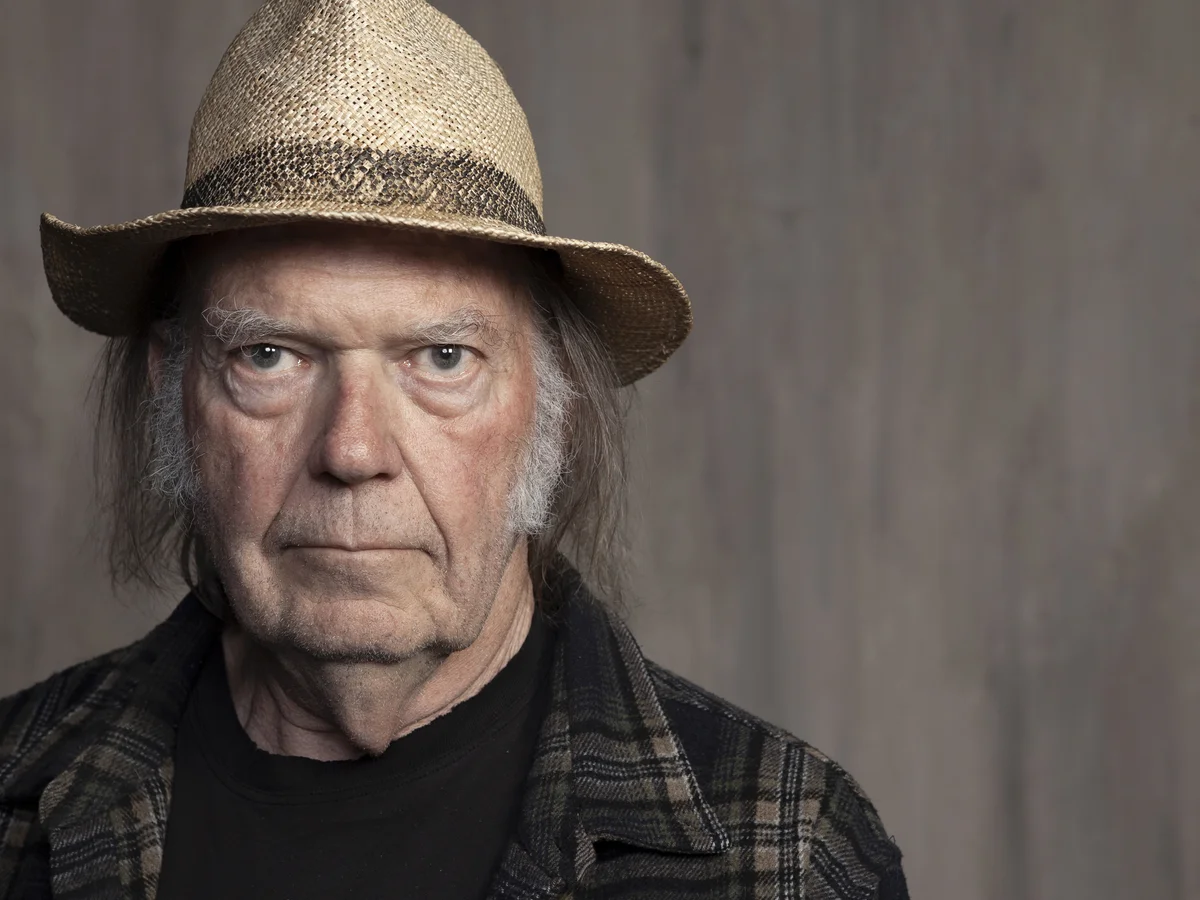Neil Young has always been one of rock’s true rebels. He never cared much about fitting in or following what others told him to do. That attitude made him a legend as a solo artist — but it also made things tricky when he had to work with other people or big record labels.
From the start, Young followed his own path. He didn’t make albums because he had to; he made them when he wanted to. This often led to creative risks — some amazing, others confusing. When you look through his long list of albums, you can feel moments where he was experimenting, trying to find something new, or even testing how far he could push his fans and his label.
When Experiments Went Too Far
In the early 1980s, Young released Everybody’s Rockin’, an album where he dressed up like a 1950s rock-and-roll singer with a pink suit and slick hair. Many fans didn’t know what to think, and the label wasn’t happy either. But Young didn’t care — he was making a point. He wanted to show that he couldn’t be controlled, even if that meant confusing everyone around him.
Then came Landing on Water in 1986, a record full of heavy drums and synths. It was clear that the 1980s sound had taken over, and it didn’t really suit him. Neil Young has always been about honest, raw music — not flashy production. Listening to that album, you can almost hear him trying to fit into the MTV world, even though it never really worked for him.
Still, even when his albums weren’t great, Young’s fearless spirit showed through. He never chased trends; he challenged them.
Trouble With the Spotlight
One of the most awkward moments in his career came when he appeared with Crosby, Stills & Nash on The Tom Jones Show in the early 1970s. The performance looked strange — a mix of rock legends and a flashy TV host. Years later, Young’s manager admitted that Neil never forgave him for booking it. He felt embarrassed, like he was being forced into something that didn’t fit who he was.
It wasn’t that Young disrespected Tom Jones. He admired his talent. But for someone who always wanted to stay true to his roots, playing on a glitzy TV show felt fake. Even so, Young still gave it his all, adding gritty guitar parts to balance out the show’s polished sound.
The Cost of Being Himself
Neil Young’s journey shows that being true to yourself isn’t always easy. Sometimes it means standing alone or being misunderstood. His bandmates — and even fans — didn’t always get what he was doing. But that’s what makes his story special.
He could have played it safe and made another Harvest or After the Gold Rush, but he chose to take risks instead. Those choices sometimes led to strange albums or awkward moments, but they also gave us a career full of surprises.
A True Original
Neil Young isn’t perfect — and that’s exactly why people love him. He doesn’t hide behind trends or fake smiles. Whether he’s standing alone on stage with his guitar or clashing with a record label, he’s always been honest about who he is.
That honesty might have cost him some easy fame, but it gave him something far better — a legacy built on truth, passion, and total independence.

